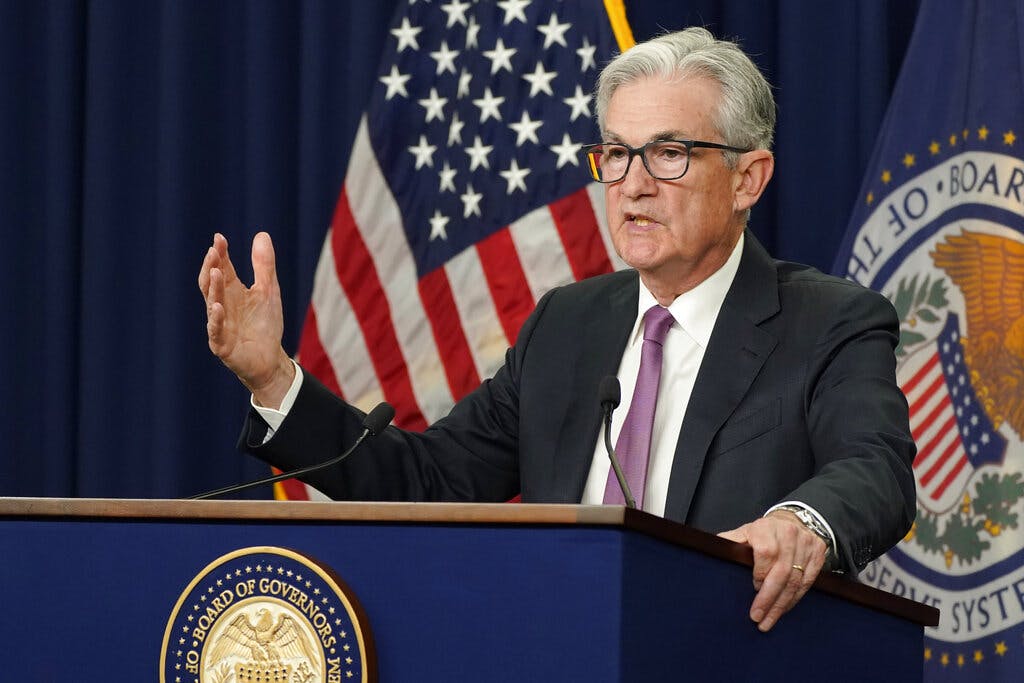The Ghoul Stalking the Federal Reserve
The Fed seems unable to exorcize the ghost of the Phillips Curve.

Justice Antonin Scalia once likened a legal principle called the Lemon Test to “some ghoul in a late night horror movie that repeatedly sits up in its grave and shuffles abroad, after being repeatedly killed and buried.” We are reminded of The Great Scalia’s ghoulish metaphor by the Phillips Curve, an economic theory on employment and inflation. Long discredited, it seems to be stalking our central bankers out of their wits.
The latest employment numbers — “a blowout,” as the Wall Street Journal puts it — offer more evidence, if any is needed, that Kiwi economist William Phillips’ eponymous curve, suggesting a trade-off between unemployment and inflation, is broken, or at least no longer of much utility in shaping monetary policy. Yet the Fed seems unable to exorcize the ghost of the Phillips Curve from its hushed corridors and policy deliberations.
The San Francisco Fed’s Mary Daly calls Friday’s job numbers a “wow,” yet can’t imagine a shift in the Fed’s course. The drop in unemployment to 3.4 percent — last seen in 1969 — is noted in the New York Times as a “Challenge For the Fed.” The central bank, the Times reminds, is “looking for the labor market to cool.” Yet “employers hired ravenously in January,” the Times says, showing that “policymakers still have a ways to go.”
In other words, the Fed is still trying to crimp job and wage growth — and even trigger a recession — in an effort to get a handle on the runaway inflation that it wants to blame on labor rather than the Fed’s own policy errors. Speaking of the resilient job market back in December, Chairman Jerome Powell lamented that the “incredibly strong” labor numbers were “too great in a way, because it’s going to be adding to inflation.”
In Mr. Powell’s zeal to stifle hiring and wage growth, there’s been no contrition for the Fed’s reckless monetary experimentation, like adding $5 trillion to its ledger, bringing its balance sheet circa 2020 to $9 trillion in the name of Quantitative Easing. Mr. Powell, too, cheered on the Democrats in Congress for injecting trillions in unneeded stimulus into an already-growing economy in early 2021. Then, following the Biden White House playbook, the Fed talked down the rising inflation as “transitory.”
No wonder the Fed would rather shift the blame for inflation on the labor market and grouse that “demand for workers remains intense despite their efforts,” as the Times reports, referring to the Fed’s efforts. The central bank’s “normal model,” economist Mike Konczal says, “would not predict slowing wages and inflation alongside dropping unemployment.” Yet that is precisely what has been happening in recent months.
Which brings us back to the Phillips Curve, first put forward in 1958, the heyday of the Keynesian vision that Economics PhDs could rewrite the laws of the markets to achieve their liberal policy goals. The idea was that higher wages, a sign of a tight job market, would cause prices to rise. By the 1970s, stagflation already belied this tidy theory, as unemployment rose steadily alongside inflation. The antidote came with the supply-side economics of the 1980s.
Yet as late as the 1990s, a former Fed vice chairman, Alan Blinder, reckoned “we had a reasonable handle on the Phillips curve.” If the jobless rate went up “by 1 percentage point for a year, that would knock about half a percentage point off the inflation rate, plus or minus.” By 2018, he noticed the formula wasn’t working. At the time, we chalked it up to the hallmarks of President Trump’s economy: a mix of low inflation and low unemployment.
All too soon the Fed was fretting about the risk of — you guessed it — not enough inflation. In 2020, at Mr. Powell’s behest, the Central Bank overhauled its two percent target for inflation so that it was no longer a maximum, but an average. That meant settling for higher inflation at times. The Fed got what it wished for, as inflation runs at 6.5 percent. Why is American labor being asked to clean up the mess? Better to call the Ghostbusters.
________
Parts of this editorial were reworded from the bulldog edition.

